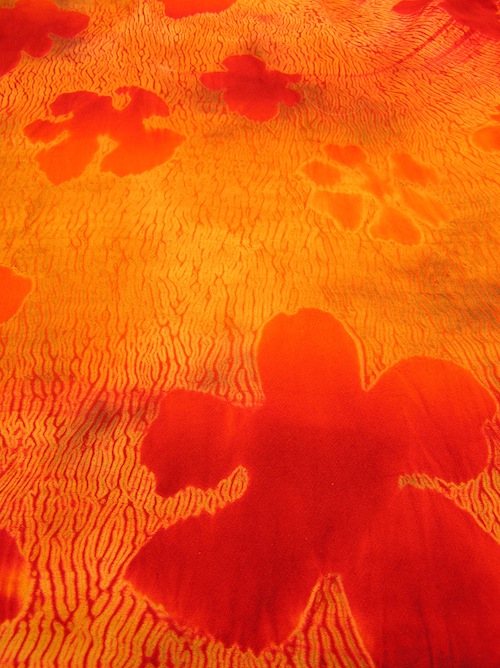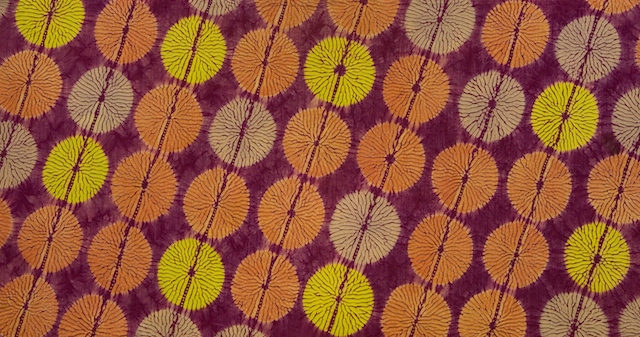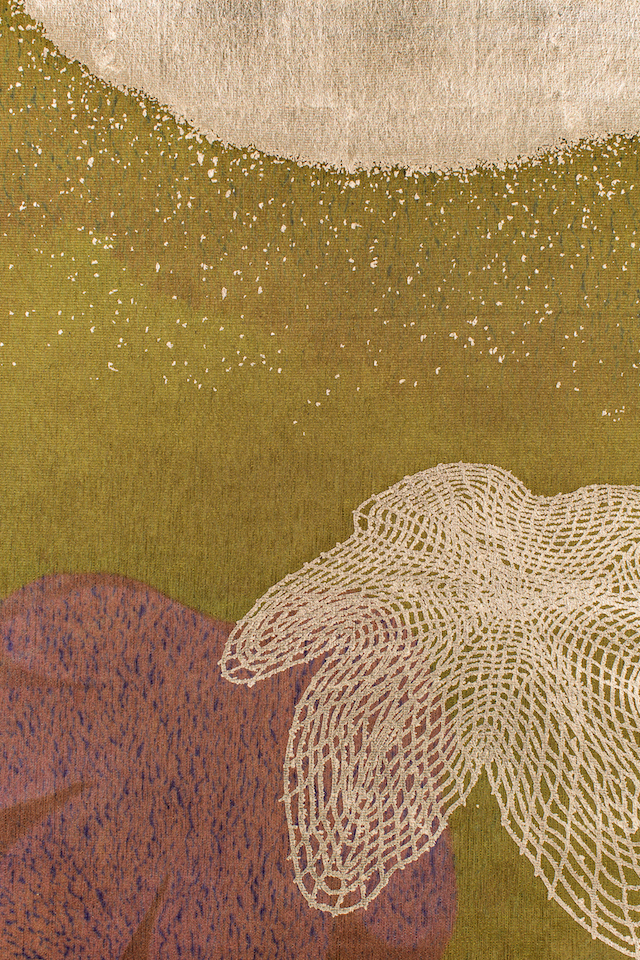
Internationally acclaimed textile and shibori guru Joan Morris last visited us in 2015 and we are pleased to welcome her back to teach with Botanical Colors this July. Shaped-resist dyeing is an elemental textile art that is thousands of years old. In Japan it’s known as shibori, but it has been made worldwide for almost as long as dyes have been applied to textiles.
Joan’s history with natural dyeing and textiles is extensive so we are lucky to catch her for an interview.
Here’s what she had to say about the history of shibori, popular techniques and the best advice to a beginner.
How did Shibori/shaped resist dyeing originate?
Shaped- resist dyeing is a very old way of patterning cloth and it’s thought to be almost as old as dyeing itself. This makes sense– if you’ve ever dyed something that had a fold it in while it was in the dye bath, you notice that the dye is distributed unevenly on the fabric; it makes a pattern. Shaped-resist dyeing basically takes advantage of this idea. The process is so old that one can’t really say where it originated. There is a map of shaped-resist dye cultures in Yoshiko Wada’s book Memory on Cloth: Shibori Now, and on that map you’ll discover that shaped-resist dyeing was developed worldwide over thousands of years. Turns out there are fewer places that didn’t have a shaped-resist dye culture long ago.
What are some of the more popular techniques for resist dyeing?
I think of shaped-resist dyeing as an open knowledge system– as long as you have the basic idea of how it works, and keep changing something in the process, the ideas can’t be used up; there’s always something new that can be done to keep it going. That’s how it has gone on for so long, and is constantly being refreshed.
There are so many ways to pattern the cloth. Most of the shaped-resist work that I do in my studio is done by using stitching as the resist. The cloth is loaded with hand stitches which are then pulled up tightly and tied off. This produces a hard, ridged bundle that is put into the dye bath. After the stitches are removed and the bundle is opened, a beautiful wood-grained pattern emerges. I’ve spent most of my life making art works based on this wood-graining, but there are so many other ways. Folding and then clamping cloth between boards or plexi-glass can produce geometries that translate in length and width across the cloth. And by wrapping the cloth on poles, and then compressing it, you can produce an array of striped-based patterns. It’s so endless.
Can you resist dye on all fabrics?
As long as you know how to dye the fabric, you can do resist dyeing on it. There are so many categories of dyes and each operates with a different set of rules. Plant dyeing, with extracts, which we’ll use in my class, work well on “natural” fabrics– silk, wool, and cellulose based fibers– from plants: cotton, linen, hemp, etc.
I read in your bio that you’ve experimented quite a bit with different tools using the shaped resist technique. What has been your most unexpected tool?
I work as a master-dyer in theatre– The master-dyer’s job is to dye, paint, print, age and distress fabrics of all categories to use in making costumes for the stage. Twenty years ago I never would have imagined that I’d need a huge, mechanized, arashi shibori pole to make striped fabrics for the stage, but that has turned out to be the case. For the past 20 years I’ve been making these textiles for “The Lion King”, and I couldn’t make the striped fabrics for that production without this huge machine. To be a dyer for theatre you pretty much have to be able to learn by the seat of your pants; if you need a tool to get the job done, and if it doesn’t exist, you make one up.
Advice to a beginner?
Try to develop perseverance and patience. Get friendly with failure; without a good tolerance for failure it won’t be possible to work in any art form for long enough to see the real fruit of your effort. Failure has been my greatest teacher.


